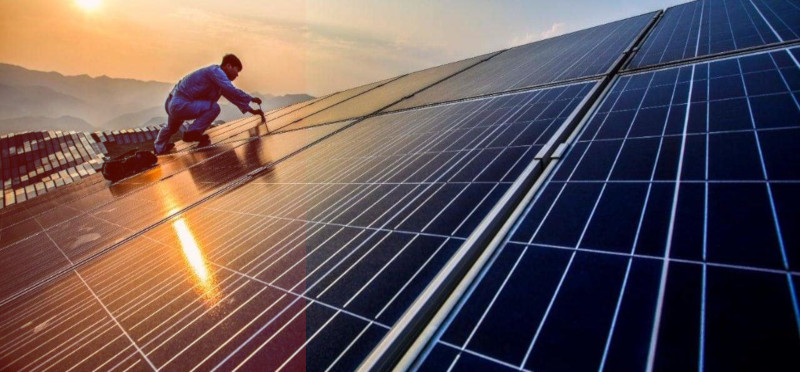
As per a study conducted by Bridge to India (BTI), a consultant firm, India will be staring at a huge pile of solar e-waste by 2050.
In Short Details :-
- The study says that due to lack of rules regarding solar cell recycling or their proper disposal by solar cell manufacturers, the country will see a huge pile of solar e-waste by 2050.
- BTI estimated that the photovoltaic waste volume is set to grow to 200,000 tonnes by 2030 and 1.8 million tonnes by 2050.
- India is one of the largest markets for solar cells in the world.
- With the government’s commitment to generate 100GW of solar power by 2022, huge investments have gone into the sector to procure solar photovoltaic cells, of which majority are imported from countries like China.
Solar Modules:-
- The solar cell modules are made by processing sand into silicon and casting silicon ingots. They are then made into cells using wafers.
- Domestic companies majorly assemble the solar cell modules in the country.
- The material composition of solar cells is 80% glass and aluminium, and non-hazardous materials and the rest 20% include polymers, metallic compounds and alloys, and metals that are classified as hazardous.
Handling The Waste:-
- As per the study, India is poorly positioned to handling waste from solar modules.
- It says that, due to the lack of policy framework, even a basic handling facility for laminated glass is unavailable in the country.
- Also, even after the framing of e-waste rules, only 4% of e-waste is being recycled in the country in the organized sector.
E-Waste Rules:-
- The Ministry of Environment, Forests and Climate Change (MoEFCC) had brought out E-waste rules in 2016 replacing earlier rules of 2011.
- In the new rules, the manufacturer, dealer, refurbisher and Producer Responsibility Organisation (PRO) are included as additional stakeholders.
- Components, consumables, parts and spares of electronic and electrical equipment (EEE) have been brought under the rules.
- The principle of Extended Producer Responsibility (EPR) which means the producer ensures to take-back end-of-life products has been strengthened.
- This was done by enabling the formation of Producer Responsibility Organisation (PRO), e-waste exchange, deposit refund scheme, etc.
- The PRO will be financed collectively or individually by the producers.
- They share the responsibility of collecting and channelizing e-waste and ensures safe handling of e-waste.
- Electronic or electrical goods manufacturers are mandated to take back their sold products with recommended mechanisms.
- The new rules made it mandatory for manufacturers to not cross the concentration levels of pollutants like lead, cadmium, hexavalent chromium, mercury, polybrominated biphenyls, and polybrominated diphenyl ethers.
- Manufacturers must provide details of the constituents of the equipment and their components along with a declaration of conformance to the RoHS (Restriction of Hazardous Substances) provisions in the product user documentation.
- The Central Pollution Control Board (CPCB) will undertake random sampling of EEE available in the market and verify its compliance with the rules.
- If the product is found to be in violation of the rules, it will be removed from the market within a time period specified by the CPCB.
- For improper handling of e-waste, a penalty will be levied including the financial penalty.
- Under Schedule I of the rules, 22 electrical and electronic components or equipment or parts or spares are covered.
Also Read: –
- Atal Ranking of Institutions on Innovation Achievements (ARIIA) Released by the President
- WHO’s World Health Statistics Overview Report 2019
Impacts of E-Waste:-
- E-waste has many detrimental effects on both the Environment and Human Beings.
- Dumping of e-waste in the landfills leads to leaching of toxic chemicals and heavy metals into the groundwater thereby contaminating it.
- They also degrade the soil.
- In landfills, burning of e-waste will lead to air pollution.
- All these causes irreversible damage to human beings and other life forms.
Conclusion:-
- The findings of the study must be taken seriously by the government and proper rules for handling solar e-waste must be framed.
- Above all, care must be taken that the framed rules are being enforced effectively.
- But, if we have to go by the E-waste rules 2016 implementation and enforcement of rules seems to be the biggest impediment in managing e-waste in the country.
- It is time the government took steps to change the scenario and put efforts in proper management of e-waste.

Leave a Reply
You must be logged in to post a comment.